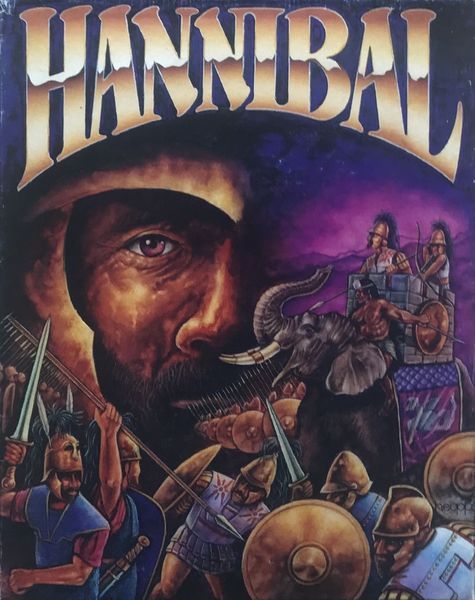Hannibal: Rome and Carthage in The Second Punic War 219-202 B.C. (1983) Board Game
Hannibal: Rome and Carthage in The Second Punic War 219-202 B.C. is a historically-themed wargame that simulates the epic conflict between Rome and Carthage during the Second Punic War. Players take on the roles of either the Roman Republic or Carthage, each vying for control over the Mediterranean region. The game captures the essence of this pivotal moment in ancient history, allowing players to strategize and wage war in a battle for supremacy.
Game Components of Hannibal: Rome and Carthage in The Second Punic War 219-202 B.C.
How To Setup Hannibal: Rome and Carthage in The Second Punic War 219-202 B.C.
Setting up the game involves placing the map board, distributing unit tokens according to the starting forces of Carthage and Rome, and dealing out option cards to each player. Players must also set up their player boards to track their resources, units, and political influence. The game starts with Hannibal’s initial invasion of Italy, and players take turns activating generals, moving units, and engaging in battles.
Gameplay Mechanics and Game Objective
Player Experience
Playing **Hannibal: Rome and Carthage** is a challenging and immersive experience. The game requires strategic thinking, as players must balance military operations with political maneuvering. The unique option card system introduces a layer of unpredictability, making each game different. The game’s historical context and detailed components add to its appeal, especially for those interested in ancient history and wargames.
Pros
Cons
Personal Thoughts on Hannibal: Rome and Carthage in The Second Punic War 219-202 B.C.
This game is ideal for experienced wargamers and those deeply interested in ancient history, particularly the Second Punic War. It offers a rich and challenging experience that rewards strategic thinking and historical knowledge. However, it may not be the best fit for casual gamers due to its complexity and the time required to play. If you’re up for a historical and strategic challenge, **Hannibal: Rome and Carthage** is a gem that will keep you engaged for hours.
We are supported by our audience. When you purchase through links on our site, we may earn an affiliate commission, at no extra cost for you. Learn more.

